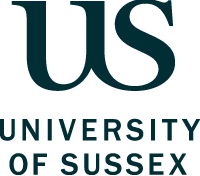Dr A Pasquazi
No more applications being accepted
Funded PhD Project (European/UK Students Only)
About the Project
Miniaturised atomic clocks in a portable format are expected to change the way we access to timing, positioning and navigation. They are a fundamental building block for the new generation of quantum sensors and could play a key role in making our society resilient to GPS spoofing and jamming.
As every clock, a portable optical atomic clock is composed of two fundamental components: a reference (an ultraprecise atomic oscillator) and a counter (an optical frequency comb, a special laser developed by the Nobel prizes John Hall and Theodor Hänsch). The Sussex Centre for Quantum Technologies is exceptionally well placed in this area, with two groups working on the very different physics necessary to the miniaturisation of those parts: a portable ion trapped calcium reference (Ion group Matthias Keller) and an optical microcomb (EPIC group, Alessia Pasquazi).
Microcombs are special pulsed lasers based on millimetre size optical resonators. Firstly discovered in 2007, they have galvanised the attention of photonic scientists with the promise to realise the full potential of frequency combs in a compact form. To meet the demand of practical atomic clocks, microcombs needs, however, to become an efficient, robust and reliable technology.
This theoretical/experimental PhD project will focus on developing an optical clock based on a new type of nonlinear optical wave, called temporal laser cavity soliton, recently discovered in the EPic laboratory at the University of Sussex (http://www.sussex.ac.uk/physics/epic/ ) for ultra-efficient microcombs. You will work in the team of Dr Alessia Pasquazi, funded by her recent ERC starting grant ‘Temporal laser cavity solitons microcombs’ (https://cordis.europa.eu/project/id/851758).
The successful applicant will join a team within the Sussex Centre for Quantum Technologies (http://www.sussex.ac.uk/scqt/). During the PhD, the student will receive both academic and transferable skills training at Sussex and through our membership of the South East Physics Network (http://www.sepnet.ac.uk) as well as project-specific skills through project supervision.
Apply through the Sussex on-line portal:
https://www.sussex.ac.uk/study/phd/apply/log-into-account
In the Other Information/Finance Section of the online form, state that you are applying for the "PhD studentship with Dr Alessia Pasquazi on solitons in microresonator based optical frequency combs ".
Finally, send an email to Dr Pasquazi (a.pasquazi @sussex.ac.uk ) to confirm that you have applied.
Funding Notes
Due to funding limitations, this project provides a fee waiver for UK and EU students only.
Applicants must hold, or expect to hold, a UK Bachelor degree in a relevant subject with first class Honours, (or an EU equivalent degree). Alternatively, a UK second-class Bachelor degree plus a UK Masters degree at Merit classification (or an EU equivalent).
£15,285 per annum tax-free bursary and waiver of UK/EU fees each year for 3.5 years.

 Continue with Facebook
Continue with Facebook

